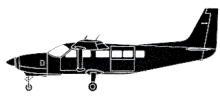Incident Overview

Description
An Airbus A330-303, operated by THY Turkish Airlines, suffered a runway excursion accident upon landing at Kathmandu-Tribhuvan Airport (KTM), Nepal. Flight TK726 was a regular passenger service from Istanbul-Atatrk International Airport (IST) to Kathmandu, Nepal. The flight was the first international flight to scheduled to arrive that morning. After descending from cruising altitude, it entered a holding pattern at FL210 at 06:12 hours local time (00:27 UTC) until about 07:00 (01:15 UTC) when it was cleared for a VOR/DME approach to runway 02. This approach was abandoned at about the Missed Approach Point at 1DME and the aircraft performed a go around. The aircraft circled and positioned for a second approach to runway 02. The aircraft touched down to the left of the runway centerline with the left hand main gear off the paved runway surface. It ran onto soft soil and the nose landing gear collapsed. The aircraft touched down at to the left of the centerline because the FMGS NAV database contained threshold coordinates for a proposed displacement of the runway 02 threshold. This was later withdrawn through a NOTAM, but had not been updated by the airline in the FMGS. Additionally, the coordinates that were initially published were inaccurate, causing the threshold coordinates to be offset to the left of the actual threshold. This had been noticed and reported by a previous Turkish Airlines flight on March 2. The changes to the FMGS had not been performed by the time TC-JOC landed at Kathmandu. PROBABLE CAUSE: “The decision of the flight crew to continue approach and landing below the minima with inadequate visual reference and not to perform a missed approach in accordance to the published approach procedure. Contributing factors were the probable fixation of the flight crew to land at Kathmandu, and the deterioration of weather conditions that resulted in fog over the airport reducing the visibility below the required minima.”
Source of Information
http://www.tourism.gov.np/np/pages/press_releases/62, https://storify.com/AviationSafety/turkish-airlines-flight, http://www.skybrary.aero/index.php/A333,_Kathmandu_Nepal,_2015http://www.tourism.gov.np/np/pages/press_releases/62, https://storify.com/AviationSafety/turkish-airlines-flight, http://www.skybrary.aero/index.php/A333,_Kathmandu_Nepal,_2015Primary Cause
Inadequate visual reference and failure to perform a missed approach, compounded by the incorrect application of FMGS (Flight Management System Guidance) coordinates, leading to a misjudgment of the runway’s threshold and subsequent landing deviation.Inadequate visual reference and failure to perform a missed approach, compounded by the incorrect application of FMGS (Flight Management System Guidance) coordinates, leading to a misjudgment of the runway’s threshold and subsequent landing deviation.Share on:





